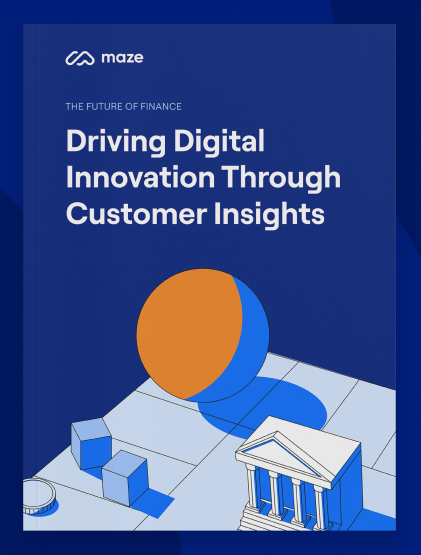Driving competitive advantage in financial services with UX research
In the current financial services landscape, how customers interact with their banks and institutions is constantly changing. And so too are customer expectations in terms of speed, personalisation, and seamless digital experiences.

The role of UX is to be the voice of the customer in the journey of transformation and solution discovery
Within a wider context of macroeconomic uncertainty, emerging technologies, and a highly competitive market, it’s imperative that financial organisations not only understand the user experience (UX), but harness it to its full potential to build customer trust. UX research is critical for this and for meeting the unique challenges that financial institutions face in today’s climate.
According to Sheila Maceira, head of design for everyday banking at a leading UK-based financial services group, specific challenges include “navigating complex financial regulations while still creating simple and user-friendly experiences, ensuring user data safety, and shaping intuitive, accessible financial apps that cater to all digital literacy and financial competence levels”.
To further understand these challenges and the opportunities ahead, Maze has published a new report, The Future of Finance: Driving Digital Innovation Through Customer Insights. Following is a discussion of key findings, the state of UX research in finance, and what product and design leaders can do to elevate financial services experiences and drive digital innovation.
Customer expectations in an evolving digital landscape
Customers are demanding more from their digital experiences and are increasingly inclined to switch providers if they don’t feel their needs are being met. Salesforce research shows that 25% of banking customers, 35% of insurance customers, and 34% of wealth management customers switched financial service providers in the past year. Across all three financial sectors, digital experience was the top reason for changing providers.
Customers are also looking for more personalisation and tailored solutions, with 66% saying they’ll leave a brand if it doesn’t provide personalised experiences. For higher customer satisfaction and retention rates, financial institutions need to address these issues. That’s where UX research comes in: to identify customer needs, expectations, and pain points, and turn them into opportunities to deliver exceptional financial experiences.
Customer experience: the key differentiator in an increasingly competitive market
According to research by McKinsey, roughly 200 digital banks have launched since 2015. And, as of September 2022, there were at least 274 fintech companies with a unicorn valuation of more than $1 billion, up from just 25 in 2017. This represents a highly competitive market where financial institutions are vying for the acquisition and retention of customers.
In addition, the current artificial intelligence (AI) revolution is changing the game for how tech firms build products. Jonathan Widawski, co-founder and CEO at Maze, explains: “A company’s ability to build products fast is no longer a differentiating factor. Instead, what matters most is a company’s ability to adapt to changing user needs on an almost continuous basis”.
Conducting UX research throughout the product life cycle is vital to adapting to evolving user needs. As technology removes barriers to innovation, banks and financial institutions will have to predict customer needs, deliver personalised experiences, and add value at each step of the customer journey if they want to truly stand out from competitors.
Driving business innovation and success through UX research
In terms of growth, continuous UX research enables more effective decision-making and business success. According to the Maze x Atlassian Continuous Research Report, product teams who conduct research on an ongoing basis report more effective decision-making, with 57% of respondents saying that research positively impacts customer satisfaction.
The 2023 Research Maturity Model Report shows that organisations that leverage research at their highest potential get 2.3 times better business outcomes, including reduced time-to-market, increased revenue, and improved brand perception. However, most financial services providers are still at a nascent stage in terms of adopting mature UX practices. In fact, financial services placed ninth out of ten industries studied – showing there’s a huge opportunity to leverage the full potential of UX research.
“The role of UX is to be the voice of the customer in the journey of transformation and solution discovery,” says Dylan Brits, client experience designer at Capitec Bank. “From a business side, UX research saves time and costs down the line and improves team culture. Research creates better solutions, better solutions create better wins, and better wins create better team cohesion”.
Building a customer-centric culture is clearly a top focus area for product leaders to drive innovation in the future of finance. Learn how to get started in Maze’s report.
UX research solutions for today and tomorrow’s challenges
The financial services industry stands at a critical juncture where leaders must recognise the need to embrace digital transformation to meet the demands of today’s tech-savvy customers. With research, product teams gain valuable insights into customer behaviours, preferences, and concerns, enabling financial services providers to offer tailored digital experiences and interactions that deliver maximum value.
Maze empowers banking and financial service providers to create exceptional experiences, fuelled by customer-driven insights and backed by strong security and compliance. Discover more about Maze‘s continuous product discovery platform for user-centric teams.
Sponsored by Maze












































